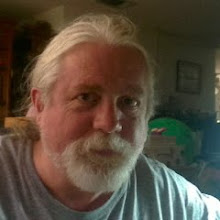My Painting Room
I thought it was about time to show where some of this stuff happens. Let's start with a closeup of the painting desk (click on the image to enlarge):
This is an old computer desk; I think I got it when I got my Tandy TRS-80! Note the Paintier 80 carousel, full of Vallejo Game Colors that I rarely use: smart, huh? On the painting area are a wet palette made from Tupperware and a sponge (and proper Winsor & Newton wet palette paper) , a lighted magnifier lamp, two lamps with daylight bulbs, and an Ott lamp. You can also see my now-favorite primers: Liquitex black and gray gesso. The desk is up against a window which lets in good light in the afternoon.
Over to the left are two bookcases full of rules and references:

You can see two more Paintier 80s, with a variety of paint brands. What you can't see are the tops of the bookcases, loaded with display cabinets full of small terrain items--and lots more paint and terrain products (you can spot some boxes of Silflor tufts).
Over to the right are a couple of what were originally printer stands:
Here's another Paintier 80, almost all Vallejo Military Colors. On top of a plank, on top of two file cabinets full of old miniature catalogs, there's a small bookcase full of rules, and a stack of boxes full of bases, transfers, spear-making materials, and such. To the far right, there's one of the two full-length bookcases full of cookbooks.
Behind this array is my improvised photo booth:
That's another one-time bit of computer furniture, with a photo booth made from sheeting and PVC pipe, ilminated by two high-intensity lamps overhead. Just then, it was set up to snap a Newline Carthaginian chariot, painted by Dave Woodward of Ever Victorious Miniatures, years ago, to go in my article on Carthage and Syracuse in the current issue of "Wargames, Soldiers and Strategy". Note the bookcase full of wacky holistic health books and magazines. Up to the right is a favorite print of my favorite Victorian hero, Fred Burnaby.
Finally, here's a broader view of the painting desk, which really only shows that when just one of the daylight lamps and the Ott light are on, it throws off the camera!
Oh, yes: that big jug on the floor is methyl ethyl ketone (MEK), for assembling knobrot plastic figures!
Allen

